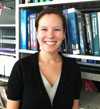FoodCORE Center: New York City

Program Overview
The New York City Department of Health and Mental Hygiene (NYC DOHMH) is the local health department for NYC, home to 40% of the population of New York State. The NYC-FoodCORE program was established to improve response to foodborne outbreaks in NYC.

“Our FoodCORE-supported Team Salmonella has greatly improved our ability to conduct salmonellosis surveillance in New York City. We are now better prepared to obtain food histories and provide surge capacity during critical outbreaks.”
HaeNa Waechter, Epidemiologist
At A Glance
Year joined FoodCORE: 2009
Population: 8.5 M1
Structure: Centralized
Epidemiology:
- Created a student interview team: Team Salmonella
- Increased capacity to conduct detailed hypothesis-generating interviews
- Increased capacity to identify and investigate outbreaks and clusters
Laboratory:
- Increased capacity for DNA fingerprinting (PFGE)
- Implemented rapid molecular serotyping of Salmonella isolates
- Implemented molecular detection of norovirus
Environmental Health
- Collaborated with Environmental Health Specialists Network (EHS-Net)
12015 Population Estimate https://www.census.gov/quickfacts/
Program Highlight
In the fall of 2009, NYC DOHMH established Team Salmonella to improve surveillance for Salmonella infections. Since then, the timeliness and completeness of interviews have greatly improved. Complete and timely interviews help solve foodborne outbreak investigations. Before Team Salmonella, fewer than 10% of people with a Salmonella infection were interviewed. With Team Salmonella, the proportion of people interviewed has increased to a range of 85-90% annually.
Additionally, patients with a Salmonella infection are contacted within the same day of when NYC DOHMH receives the report from a health care provider or laboratory. This is significantly better than the 3 weeks it used to take before Team Salmonella was created. Overall, Team Salmonella has greatly improved NYC’s ability to investigate and solve suspected outbreaks.
Percent of People with Salmonella Infections Interviewed by Year, New York City, 2009-2015

- Page last reviewed: July 22, 2016
- Page last updated: July 22, 2016
- Content source:


 ShareCompartir
ShareCompartir